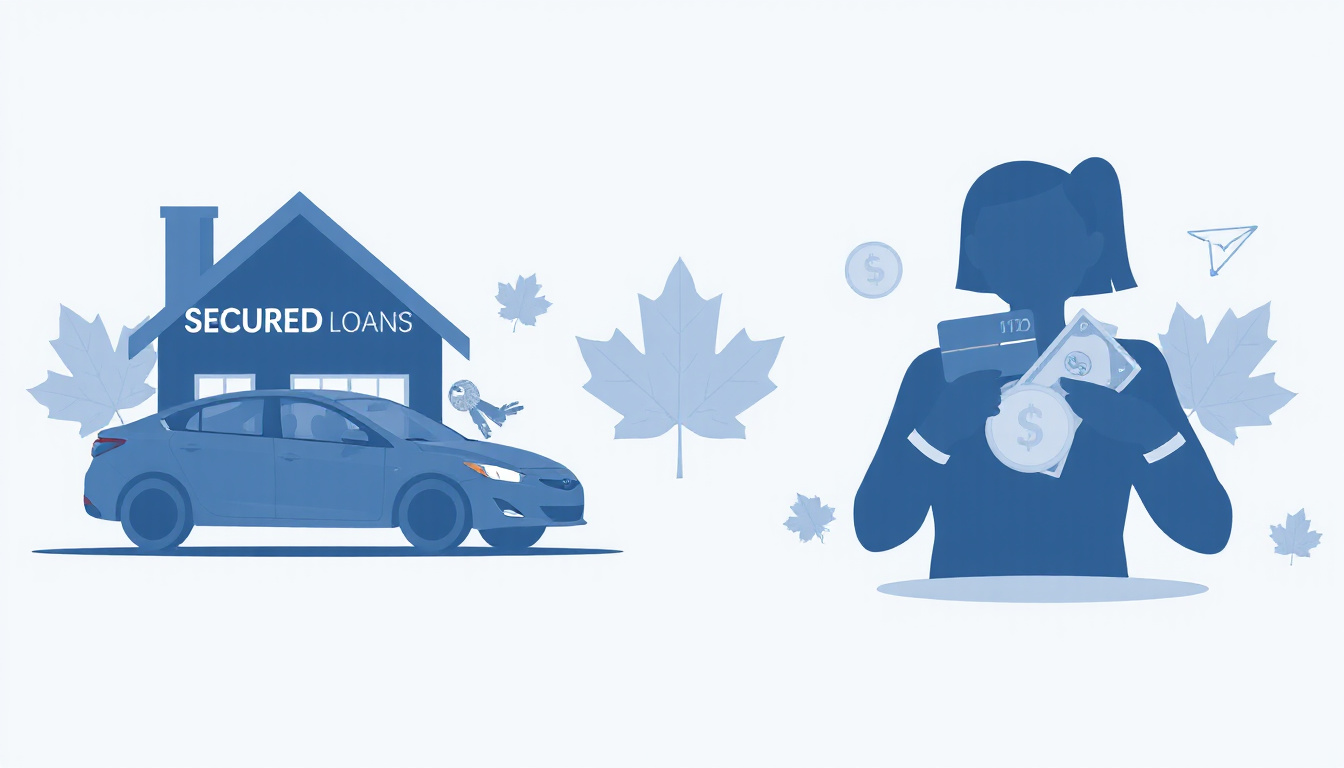Understanding Secured and Unsecured Loans: Key Differences and Benefits Explained
In the realm of personal finance, understanding the types of loans available to you is crucial. One of the essential distinctions in the world of borrowing is between secured and unsecured loans. So, what are secured and unsecured loans? Secured loans are backed by collateral, while unsecured loans do not require any asset as security. This article will delve into the definitions, key differences, and benefits of each type of loan, providing Canadians with the knowledge they need to make informed financial decisions. Whether you’re looking to consolidate debt, make a significant purchase, or finance an important project, this guide will equip you with the insights needed to choose the right loan for your needs.

Key Takeaways
- Secured loans require collateral, while unsecured loans do not.
- Interest rates on secured loans are generally lower compared to unsecured loans.
- Unsecured loans are often easier and quicker to obtain due to less paperwork.
- Secured loans can offer higher borrowing limits based on the value of the collateral.
- Both loan types have distinct advantages that suit different financial needs.
Definition of Secured and Unsecured Loans
When exploring debt management options, it’s essential to understand the key differences between various loan types. What are secured and unsecured loans? Secured loans are financial products backed by collateral, meaning the borrower pledges an asset—like a home or vehicle—against the loan. If repayment defaults occur, the lender has the right to seize the collateral to recover losses. This makes secured loans generally easier to obtain since they present less risk to lenders, often resulting in lower interest rates. In contrast, unsecured loans do not require collateral; they are based mainly on the borrower’s creditworthiness and financial history. Though they offer greater flexibility and access without risking personal property, unsecured loans typically come with higher interest rates, making them riskier for lenders. Understanding these distinctions is vital for Canadians seeking effective debt relief options and informed financial planning.
Key Differences Between Secured and Unsecured Loans
When considering financial options, many Canadians find themselves asking, ‘What are secured and unsecured loans?’ Understanding the key differences between these two loan types is crucial for effective debt management. Secured loans are backed by collateral, such as a home or vehicle, which the lender can seize if the borrower fails to repay. This collateral lowers the lender’s risk and often results in lower interest rates for the borrower. On the other hand, unsecured loans do not require collateral and are primarily based on the borrower’s creditworthiness, leading to potentially higher interest rates due to increased risk for the lender. Knowing these differences allows individuals to make informed decisions about which type of loan best fits their financial situation, ultimately aiding in effective financial planning and debt relief strategies.
‘In lending, what’s secured is only as secure as the borrower’s ability to repay.’ – Unknown

Benefits of Secured and Unsecured Loans
When considering financial options, it is important to understand what secured and unsecured loans are and the benefits each offers. Secured loans are backed by an asset, such as a house or car, which provides lenders with assurance that they can recover their money if you fail to repay. This assurance often results in lower interest rates and larger loan amounts, making secured loans ideal for significant investments like home renovations or education. On the other hand, unsecured loans do not require collateral, relying instead on your creditworthiness for approval. These loans offer the flexibility of not risking your personal assets while still providing access to funds for immediate needs like debt consolidation or emergency expenses. Understanding the distinctions between these loan types can empower Canadians to make informed financial decisions that align with their unique situations.
